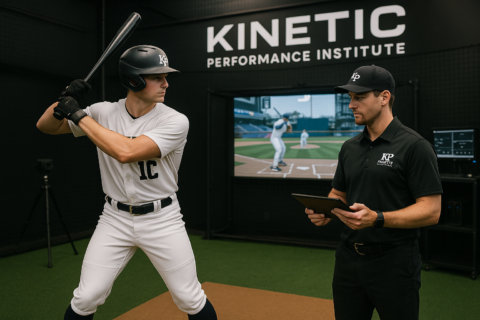Broken: Why The Lesson Model is Hurting Youth Players
The model that has prevailed over the last 15-20 years in youth baseball and softball is failing a generation of young athletes. The reason the lesson model has prevailed is quite simple, ego-filled coaches grabbed power with the opportunity that the rise of the privatization of youth sports created and they created a system that benefits them, not the athlete.
Below are the reasons why the individual lesson model is broken and does not benefit the athlete in most scenarios…
Coach-Centered Instead of Athlete-Centered
A one-on-one lesson depends on the direct instruction of a coach. That coach is the center of that lesson, as it is the only coach that designs the lesson and his/her subjective opinion is the guide for the lesson. There are numerous problems with that setup, with the main one being is that the athlete should ALWAYS be at the center of the process, even at a young age. Most lesson coaches give the same environment and setup for every athlete and they position themselves as the authority of failure or success. Often times that coach is connected to a team the athlete competes on, meaning the lesson coach has influence on the lineup, which leads families to feel pressure to pay for one-on-one lessons so they can be in the lineup.
The lesson model is often extremely transactional… the athlete pays a coach “x” amount of money for a certain amount of time (transaction starts/begins) with nothing in between transactions. True development happens when an athlete is able to integrate systems into their daily routine, not only when there is a monetary transaction.
Development should be an athlete-centered process with a collaborative team of experts creating systems to drive peak performance, not a coach-centered process with only one coach’s ego involved.
Boring, Non-Competitive Environment Instead of an Engaging, Competitive Environment
Individual lessons are often extremely boring and nothing about the environment is engaging or competitive. When the environment only consists of a coach and a player, that scenario is the furthest away from a real-game environment where there are many different factors all engaged at once. This boring environment often leads to mental fatigue by athletes, instead of excitement and anticipation for training. The more game-like and competitive the environment is, the more the training will transfer over to in-game performance.
The training environment should be fun, engaging, and interactive… not boring and isolated. Baseball is slow enough and can be tough for young athletes to engage with, so the training environment is of the utmost importance.
Expensive with Little Return on Investment Instead of Affordable and High Return on Investment
Because the one coach that is the center of the process in an individual lesson must make a lot of money, they often charge very high prices for one-on-one lessons. They have to do this because their financial model is not one of volume, it is of low volume/high pricing. This leads to family paying for one one lessons what they could be getting with integrated group systems. Because it is extremely difficult to replicate the game environment and optimal learning in a one-on-one lesson, there is very little return on this high priced investment.
In the group environment the cost is spread out over the group, which means that the group instruction can involve many more coaches and the environment is interactive and competitive, which science has proven leads to a much higher transfer to the game. This higher rate of game transfer leads to a much higher return on investment.
One Discipline Instead of Multiple Disciplines
In the individual lesson setup, the coach usually has limited knowledge of one specific discipline (hitting or pitching). We know that physiologically that performance in the game environment involves many different disciplines. The individual lesson coach is a one-trick-pony and that severely limits the scope of actual instruction that can be applied to real development and performance.
In a properly setup group environment, there are many coaches and disciplines involved. Professional strength coaches create warmup and strength programs tailored for each athlete. Professional pitching coaches create arm care and throwing programs for both pitchers and hitters. And professional skill coaches create skill routines for hitters and pitchers with input from multiple disciplines for a holistic development system.
Low Leverage of Technology Instead of High Leverage of Technology
It is very difficult for one-on-one lesson coaches to acquire and leverage technology because their low volume model makes it challenging to invest in tech and use the data for applicable training. If a coach is charging a high price for 3-4 lessons per day, they only net enough profit to pay themselves, not acquire the best technology in the industry. And because their volume is so low, they do not accumulate enough data to truly leverage the data. To identify trends and create a checks/balance system using data, you need thousands of data points to normalize and leverage data for advanced programming.
In a dynamic group environment the athletes are able to utilize and leverage technology at a much higher rate. It is much easier to invest in technology in a higher-volume financial model since there are many athletes involved in the process, so the cost of investing in tech is spread out over a much larger population. And because the population is larger, proper data collection and leveraging can take place to create data-based training using trends and patterns across many, many data points.
At KPI we always do what’s best for the athlete and the small group setup we have created for all of our programs was intentionally cultivated to be the best possible environment for athletes to develop in. The fun, engaging, and more effective environment our developmental systems create are having an extremely positive effect for the hundreds of athletes using it across the West Coast.


